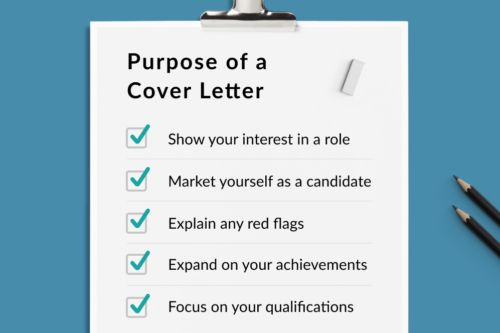Mastering the Art of the Cover Letter: How to Land Your Dream Job
By: Javid Amin
In the fiercely competitive job market of today, a strong and personalized cover letter can make all the difference. While your resume provides a structured and concise overview of your qualifications, a cover letter gives you the space to tell your story, demonstrate your enthusiasm, and explain how you’re uniquely qualified for the role. Done right, it can elevate your application from the pile and land you that crucial interview.
Why Cover Letters Matter
Let’s start with the basics: What is a cover letter, and why does it matter? Simply put, a cover letter is your personal introduction to a potential employer. It complements your resume by showcasing your personality, highlighting your key achievements, and explaining why you’re the ideal candidate for the job. Unlike a resume, which follows a rigid format, a cover letter allows you to inject creativity and tailor your message specifically to the employer.
A thoughtfully crafted cover letter demonstrates your professionalism, attention to detail, and genuine interest in the role. It’s also an opportunity to address any gaps or anomalies in your resume, such as career changes or employment gaps, and frame them in a positive light.
The Anatomy of a Perfect Cover Letter
To create a cover letter that gets noticed, you need to structure it effectively. Here’s a detailed breakdown of what to include:
1. Header
Start with your contact information at the top of the page, including:
- Full Name
- Phone Number
- Email Address
- LinkedIn Profile or Portfolio (if applicable)
- Date
Below this, include the employer’s contact information:
- Hiring Manager’s Name (if known)
- Company Name
- Company Address
2. Salutation
Address your letter to a specific person whenever possible. Use the hiring manager’s name—this shows that you’ve done your homework. If the name isn’t available, use a professional salutation like “Dear Hiring Manager” or “Dear [Department] Team.”
3. Engaging Opening Paragraph
Your opening paragraph should grab the reader’s attention. Mention the position you’re applying for, how you found the opportunity, and why it excites you. This is also a good place to mention a mutual connection, if applicable.
Example: “I am thrilled to apply for the [Position Title] role at [Company Name]. As someone deeply passionate about [industry or field], I’ve admired your company’s commitment to [specific company value or achievement]. With a proven track record in [specific skill or experience], I am eager to bring my expertise to your team.”
4. Body Paragraphs: Showcase Your Value
The body of your cover letter should focus on how your skills and experiences align with the job requirements. Use specific examples to highlight your accomplishments and quantify them whenever possible.
- First Paragraph: Discuss your most relevant experience or skills and how they align with the job description. Use metrics to support your claims (e.g., “Increased sales by 20% within six months by implementing a new strategy”).
- Second Paragraph: Emphasize your knowledge of the company and how your values align with theirs. Employers want to hire someone who is not only qualified but also a good cultural fit.
Example: “In my previous role at [Company Name], I successfully led a team of 10 to deliver a project that increased efficiency by 30%. I believe this experience, combined with my passion for [industry], aligns perfectly with [Company Name]’s mission to [specific company goal or value].”
5. Closing Paragraph: Call to Action
End your letter with a strong closing that reiterates your interest and invites further discussion. Thank the employer for their time and express your eagerness to contribute to their team.
Example: “Thank you for considering my application. I am excited about the opportunity to bring my skills and passion to [Company Name]. I would welcome the chance to discuss how I can contribute to your team’s success. Please feel free to contact me at [phone number] or [email address] to arrange a conversation.”
6. Professional Closing and Signature
Sign off with a professional closing, such as:
- Sincerely
- Best regards
- Kind regards
Below your signature, include your typed name. If submitting a physical copy, leave space for a handwritten signature.
Tips for Crafting a Standout Cover Letter
1. Tailor Each Cover Letter
Avoid generic cover letters at all costs. Customize each letter to the specific role and company. Use keywords from the job description to demonstrate that you’ve carefully read and understood the requirements.
2. Show, Don’t Just Tell
Back up your claims with evidence. Instead of saying, “I’m a great team player,” provide an example: “In my previous role, I collaborated with cross-functional teams to deliver a project two weeks ahead of schedule.”
3. Keep It Concise
While your cover letter should be detailed, it shouldn’t exceed one page. Aim for 300-500 words that pack a punch.
4. Focus on the Employer’s Needs
Rather than focusing solely on what you want from the job, emphasize what you can offer the employer. Show how your skills and experiences align with their goals.
5. Proofread Thoroughly
Typos and grammatical errors can leave a negative impression. Proofread your cover letter multiple times and consider asking a trusted friend or mentor to review it.
6. Leverage Technology Wisely
Use tools like Grammarly to polish your writing and ensure clarity. AI-powered platforms can also provide suggestions for tailoring your cover letter, but ensure the final version feels authentic and personal.
Example Cover Letter
[Your Name] [Your Address] [City, State, ZIP Code] [Your Email Address] [Today’s Date]
[Recipient Name] [Recipient Title] [Company Name] [Company Address] [City, State, ZIP Code]
Dear [Recipient Name],
I am writing to express my interest in the [Job Title] position at [Company Name] as advertised on [Job Board/Company Website]. With my [X years] of experience in [relevant field/industry], I am confident in my ability to contribute effectively to your team.
In my previous role at [Previous Company], I successfully [specific achievement or responsibility]. This experience has equipped me with the skills and knowledge necessary to excel in the [Job Title] role at [Company Name]. I am particularly drawn to this opportunity because of [specific reason related to the company/job].
I am eager to bring my strong [specific skill] and [another relevant skill] to [Company Name]. I am confident that my proactive approach and dedication to excellence will make me a valuable addition to your team.
Thank you for considering my application. I look forward to the opportunity to discuss how my background, skills, and enthusiasm can be in line with the goals of [Company Name].
Sincerely, [Your Name]
Common Mistakes to Avoid
- Using a Generic Template: Recruiters can spot a cookie-cutter cover letter from a mile away. Always customize your letter.
- Overusing Buzzwords: While terms like “self-starter” and “results-driven” sound good, they’re often overused. Be specific about your achievements instead.
- Neglecting to Address the Employer’s Needs: A good cover letter focuses on what you can do for the company, not the other way around.
- Being Too Formal or Too Casual: Aim for a professional yet conversational tone.
- Skipping the Proofreading Step: Even a single typo can undermine your credibility.
Bottom-Line
A well-crafted cover letter is your opportunity to shine and set yourself apart from other candidates. By tailoring your message, showcasing your unique value, and aligning with the company’s goals, you can create a cover letter that not only gets read but also makes a lasting impression. Remember, this isn’t just about landing a job—it’s about finding a role where you can thrive and contribute meaningfully. So, take the time to craft a cover letter that tells your story compellingly and authentically. It’s an investment in your future that can pay off in a big way.



